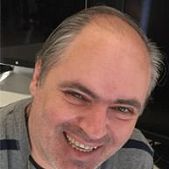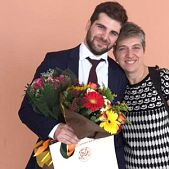
Antibody breakthrough gives new hope for HIV treatments
Scientists in USA, led by a Greek researcher, have created a two-pronged antibody that aids the immune system in finding and eliminating HIV-infected cells that are hard to see.
HIV can hide in the CD4 helper cells that are located in the lymph nodes, which has made it more difficult to fight the disease. In the past, vaccines and checkpoint inhibitors were able to boost CD8 T cells to kill the virus, but they weren’t effective if they didn’t have access to the area where HIV was replicating. The CD8 T cells were able to get into the lymph node follicles but couldn’t kill the virus.
The researchers, led by Dr. Constantinos Petrovas of the Immunology Laboratory of the US National Institute of Allergy and Infectious Diseases (NIAID), made the publication in the American Medical Journal Science Translational Medicine. In the research participated another Greek scientist, Elias Vagios of the Department of Histopathology at the Venizelion Hospital of Heraklion, Crete.
However, researchers discovered killer CD8 T cells in that same area that could be used to hunt down the infected cells. They showed that the CD8 T cells could be triggered to kill CD4 cells when they were cultured with a dual-functioning antibody that was made to target the virus and dispatch CD8 T cells.
They say that these bispecific antibodies could be a treatment strategy. In addition, they emphasize the use of bispecific antibodies may be considered as part of a “shock-and-kill” treatment strategy in those people taking suppressive antiretroviral therapy (ART) for extended periods of time.
Johnston said this approach addresses two main challenges in HIV research: How to access and how to kill infected cells.
“They engineered an antibody that may solve both issues. It takes the brakes off killer T cells and lets them do what they’re designed for, that is, kill virus-infected cells where they live,” she said. The results are promising, but to prove it works it must be tested in people with HIV.
Dr. Petrovas has been working in the field of HIV/SIV pathogenesis for more than 15 years. He obtained his Ph.D. in immunology studying anti-phospholipid antibodies in autoimmunity and HIV at the School of Medicine, National University of Athens, Greece. He pursued post-doctoral work at the Department of Biochemistry, Boston University and Department of Microbiology and Immunology, Drexel University before he joined the Immunology Laboratory at VRC in 2005.
His previous work focused on the mechanisms mediating the “exhaustion” of SIV/HIV- specific CD8 T cells and he was the first to describe PD-1 as a mediator of SIV/HIV-specific CD8 T cell survival. More recently, his research has been focused on the dynamics of CD4 and CD8 T cells at tissue level and particularly in the lymph node follicles in HIV and SIV infection. His work was the first to describe the phenotype, localization, molecular profile and dynamics of Tfh CD4 T cells in acute and chronic SIV infection. Currently, he is characterizing the dynamics of tissue immune cells in HIV/SIV and cancer and developing tools to understand the interplay between inflammation, adaptive immunity and tissue antigens.










